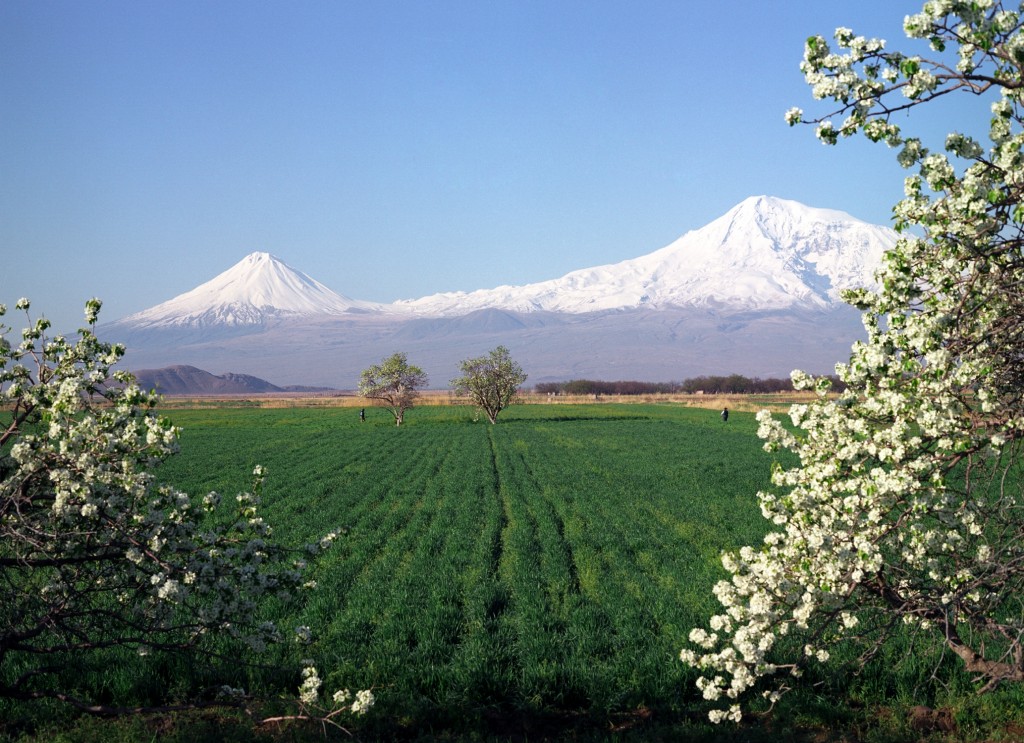THE MUSIC
HEAT TENDERNESS LUSCIOUSNESS
Hear Music from GORKY’S DREAM GARDEN (the opera):
1. GORKY’S DREAM GARDEN Trailer (3:15) These sound bites portray some of the story’s key themes: OPEN WITH: ACT I at the Aviation Pavilion of the New York City 1939 World’s Fair for which the struggling artist on the rise, Arshile Gorky, has designed murals, and is now making a visionary presentation before Mayor Fiorello LaGuardia. CUT TO: the beauty and enigmas of Gorky’s lost homeland in the Armenian provinces of Turkey’s Lake Van region before the Armenian Genocide of 1915, as conveyed by two mythological figures. The nostalgic moment features the bittersweet music performed by The Fiddler by the Tree. The kindly Black Monk of Gorky’s childhood village joins in delivering lines from a poem by Vahan Tekeyan, a witness to the Genocide. CUT TO: Gorky’s life with Agnes–a much younger American art student from Boston. For Agnes, their duets are songs of courtship and intimacy, but for Gorky, they are prayers for the 1.5 million Armenians who perished during the Genocide, and the multitude of orphans it left behind. CUT TO: Gorky’s “dream garden” as portrayed through the bedrock of the Armenian Liturgy, and perhaps the survivor spirit of many faithful Armenians: the spiritual song “So be it, the Spirit is Forever.” Here, aiming for transcendence, Gorky contemplates this song in recollection as sung in ancient Armenian by The Black Monk, who is joined by the ghost spirit of his martyred mother Shushan. CLOSE WITH: Gorky’s inspiring closing thoughts of his World’s Fair presentation (performed by Broadway leading man, Brent Barrett; violinist, Ani Kavafian; the late folksinger, Richie Havens; soprano, Karen Lubeck; mezzo-soprano, Maro Partamian).
2. The Real is Surreal Waltz: Friends and Critics (2:13) At ACT I’s scene at the Aviation Pavilion of the New York City 1939 World’s Fair for which Gorky—a struggling artist on the rise—has designed murals, friends Isamu (Noguchi) and Bill (deKooning), and pontifications among art critics Clement Greenberg and Julian Levy set the scene (dialogue missing on the tape). Accompanying the banter, a virtuoso piano waltz in the Soviet era tradition (one of three throughout the opera) with a nod to Aram Khatchaturian’s great “Masquerade Waltz,” paves the way for the entrance of an exotic and dashing Gorky.
3. Imagine: The Fantasy of Flight (2:32) During ACT I’s Aviation Pavilion scene, Gorky delivers his visionary quest before Mayor Fiorello LaGuardia and the Fair’s spectators for the era’s trying times (performed by Broadway leading man, Brent Barrett).
4. Vartoosh Reads a Letter from her Brother: Curse or Blessing? (2:54) In the first of four letter reading scenes laced throughout the opera, Gorky’s sister Vartoosh reads a letter from her brother that is at once nostalgic for their Armenian homeland, and informing that he may have cancer (performed by actress, Adela Maria Bolet).
5. Imagine: Far Away Dreams (vocal reprise) (2:15) During ACT II’s Glass House scene, now 1946, married and living in the suburbs of Connecticut, Gorky and his young American bride share a domestic moment. Agnes knows her husband is brilliant, but she cannot comprehend his mysterious ways (performed by soprano, Karen Lubeck).
WARNING! Unauthorized reproduction, broadcast, distribution and commercial use of this copyrighted music and its archival recordings are PROHIBITED BY LAW and subject to $500,000.00 in penalty fines from Michelle Ekizian and the American Federation of Musicians! Permission for use and distribution of this material must be obtained from Michelle Ekizian: mekizian@optonline.net
